Abstract artist Mary Weatherford dazzles with neon-bisected takes on Titian
American artist Mary Weatherford – among Wallpaper* guest editor Kelly Wearstler’s pick of contemporary creatives in our October 2022 issue – has imagined an entire exhibition of abstract paintings dedicated to Titian’s Flaying of Marsyas

When Titian’s Flaying of Marsyas arrived at London’s Royal Academy of Arts in 1983, its first modern appearance outside Italy, it was still unseen by many. The masterpiece was one of Titian’s last, and tells Ovid’s tragic story of the satyr Marsyas, who, after losing a flute-playing contest to the god Apollo, was punished with a cruel, prolonged death. Audiences were spellbound by its immense agony; flesh ripped from bone, bodies in frenzied motion, heightened by the Venetian artist’s uncharacteristically loose brushwork.
Flaying of Marsyas also cast a spell over American artist Mary Weatherford – one of five contemporary creatives showcased by Wallpaper* guest editor Kelly Wearstler in her October 2022 issue takeover – when she first saw the painting in Rome a decade ago. ‘I was shocked’, she says. ‘I had seen violence depicted in painting before, but never like this. The characters attending the execution seem to take it in their stride, particularly the violinist who lays down a musical backdrop to the suffering. The name of the painting literally translated from Italian is “The Punishment of Marsyas”, which resonates with me because, in theory, punishment should be fair. This punishment – for hubris or ignorance? – seems outsized, to put it mildly.’

A portrait of Mary Weatherford taken in front of a painting from her series The Flaying of Marsyas. Photography: Fredrik Nilsen Studio, courtesy of Gagosian
Weatherford imagined an entire exhibition of abstract paintings dedicated to Titian’s. In April this year, that exhibition, ‘The Flaying of Marsyas’, came to life at Venice’s Palazzo Grimani, coinciding with the 59th Venice Biennale. ‘I wanted to remake the painting again and again,’ she says.
Mary’s juxtaposition of neon lighting among painterly strokes evokes incredible tension
Kelly Wearstler
While Titian’s painting was dropping jaws in 1980s London, Weatherford was studying art at Princeton. ‘Postmodernism was in the air,’ she recalls. ‘I interpreted it to say I had permission to use whatever style I wanted to get my point across.’ It’s this curiosity for history and openness to shapeshifting that has defined the artist’s career and seen her become one of the pivotal painters of her generation.
Though her work might now be characterised by broad, gestural brushstrokes with layered colours and paint viscosities, it wasn’t always this way. The artist has moved through chapters of disparate painterly styles – from assemblages involving shells, sponges, and starfish to razor-sharp abstraction, image appropriation and photography – in which themes such as gender and architecture rub up against each other. One constant, though, has been painting horizontally, on the floor or a table. ‘This approach has been the same for 30 years,’ she says. ‘I just commissioned a platform that can be perfectly levelled. I can pour liquid colour onto a canvas stapled to the platform, and the paint doesn’t move.’

Mary Weatherford, The Flaying of Marsyas—4500 Triphosphor, 2021-22. Photography: Matteo De Fina, courtesy of Gagosian
Her artistic influences have ranged far and wide – ‘you name it, it’s in there’, she says – but one stands out: the American folk musician Dave Van Ronk, with whom Weatherford studied guitar in the 1990s. ‘For three years on Thursday evenings, I went for lessons at his apartment on Sheridan Square in New York,’ she recalls. ‘He taught me how to practise, and that carried over to painting. Van Ronk was one of my great art teachers.’
Another pivotal moment arrived in 2012. While a visiting artist at California State University, Weatherford was driving around the small city of Bakersfield. She was struck by the array of neon signs cladding factories, shops, restaurants and advertisements. For The Bakersfield Project, 2012, Weatherford first incorporated the sinuous rods of neon that would go on to define her best-known paintings. Evoking hand-drawn lines, her neon ebbs and flows above her vast linen canvases (including those on show at Palazzo Grimani) like divine interventions or industrial interruptions – a searing, retina-marking counterpoint to her sombre palette of blacks, greys, purples and accents of silver.
Wallpaper* Newsletter
Receive our daily digest of inspiration, escapism and design stories from around the world direct to your inbox.

Detail shot of Mary Weatherford, The Flaying of Marsyas—4500 Triphosphor, 2021-22. Photography: Fredrik Nilsen Studio, courtesy of Gagosian
Her art has offered feminist reworkings of the male-dominated colour field and reconfigured the path for landscape painting. ‘I think of landscapes as the eyes of history,’ says Weatherford, who often draws on the expansive vistas and ethereal light of her home state of California. ‘For the most part, landscapes are stable and immutable. Events happen in them, mostly leaving no trace. But the landscape is always there as a witness.’
Titian’s Flaying of Marsyas is a horror story in its purest form; a potent example of man’s cruelty to another. In Weatherford’s response – ongoing in a series of woodblock prints on Japanese paper – it’s the absence of bodies that allows for the presence of humanity.
INFORMATION
‘The Flaying of Marsyas’ is at Museo di Palazzo Grimani, Venice, until 27 November 2022
gagosian.com, polomusealeveneto.beniculturali.it
A version of this article appears in the October 2022 Legends Issue of Wallpaper*, available in print, on the Wallpaper* app on Apple iOS, and to subscribers of Apple News +. Subscribe to Wallpaper* today
Harriet Lloyd-Smith was the Arts Editor of Wallpaper*, responsible for the art pages across digital and print, including profiles, exhibition reviews, and contemporary art collaborations. She started at Wallpaper* in 2017 and has written for leading contemporary art publications, auction houses and arts charities, and lectured on review writing and art journalism. When she’s not writing about art, she’s making her own.
-
 Three new coffee makers for a contemporary brew, from a casual cup to a full-on branded espresso
Three new coffee makers for a contemporary brew, from a casual cup to a full-on branded espressoThree new coffee makers, from AeroPress, Jura and Porsche x La Marzocco, range from the defiantly manual to the bells and whistles of a traditional countertop espresso machine
By Jonathan Bell Published
-
 Don't miss Luxembourg's retro-futuristic lab pavilion in Venice
Don't miss Luxembourg's retro-futuristic lab pavilion in VeniceAs the Venice Biennale enters its last few weeks, catch 'A Comparative Dialogue Act' at the Luxembourg Pavilion
By Amah-Rose Abrams Published
-
 A Berlin park atop an office building offers a new model of urban landscaping
A Berlin park atop an office building offers a new model of urban landscapingA Berlin park and office space by Grüntuch Ernst Architeken offer a symbiotic relationship between urban design and green living materials
By Michael Webb Published
-
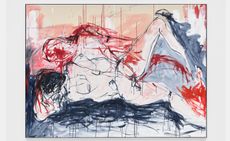 ‘This blood that is flowing is my blood, and that should be a positive thing’: Tracey Emin at White Cube
‘This blood that is flowing is my blood, and that should be a positive thing’: Tracey Emin at White CubeTracey Emin’s exhibition ‘I followed you to the end’ has opened at White Cube Bermondsey in London, and traces the artist’s journey through loss
By Hannah Silver Published
-
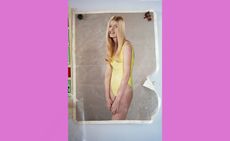 ‘Happy birthday Louise Parker II’: enter the world of Roe Ethridge
‘Happy birthday Louise Parker II’: enter the world of Roe EthridgeRoe Ethridge speaks of his concurrent Gagosian exhibitions, in Gstaad and London, touching on his fugue approach to photography, fridge doors, and his longstanding collaborator Louise Parker
By Zoe Whitfield Published
-
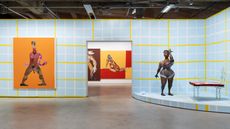 Harlem-born artist Tschabalala Self’s colourful ode to the landscape of her childhood
Harlem-born artist Tschabalala Self’s colourful ode to the landscape of her childhoodTschabalala Self’s new show at Finland's Espoo Museum of Modern Art evokes memories of her upbringing, in vibrant multi-dimensional vignettes
By Millen Brown-Ewens Published
-
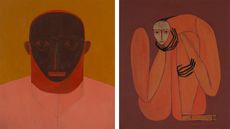 Artist Peggy Kuiper’s impactful figurative works explore her memories and emotional landscape with striking visual intensity
Artist Peggy Kuiper’s impactful figurative works explore her memories and emotional landscape with striking visual intensityPeggy Kuiper presents ‘The Conversation That Never Took Place’ at Reflex in Amsterdam, featuring over 25 new works (until 13 July)
By Simon Chilvers Published
-
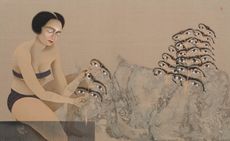 Don’t miss: Hayv Kahraman intertwines colonialism and botany in London
Don’t miss: Hayv Kahraman intertwines colonialism and botany in LondonArtist Hayv Kahraman draws parallels between colonial botany and her experiences as an Iraqi refugee transplanted into Europe, at Pilar Corrias in London
By Hannah Silver Published
-
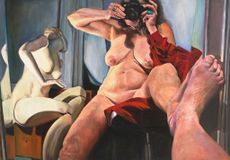 The ageing female body and the cult of youth: Joan Semmel in Belgium
The ageing female body and the cult of youth: Joan Semmel in BelgiumJoan Semmel’s ‘An Other View’ is currently on show at Xavier Hufkens, Belgium, reimagining the female nude
By Hannah Silver Published
-
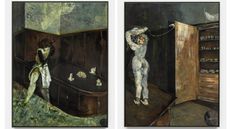 Guglielmo Castelli considers fragility and violence with painting series in Venice
Guglielmo Castelli considers fragility and violence with painting series in VeniceGuglielmo Castelli’s exhibition ‘Improving Songs for Anxious Children’ at Palazzetto Tito, Venice, explores childhood as the genesis of discovery
By Sofia Hallström Published
-
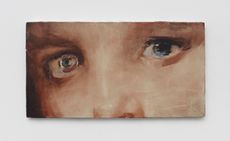 ‘Accordion Fields’ at Lisson Gallery unites painters inspired by London
‘Accordion Fields’ at Lisson Gallery unites painters inspired by London‘Accordian Fields’ at Lisson Gallery is a group show looking at painting linked to London
By Amah-Rose Abrams Published